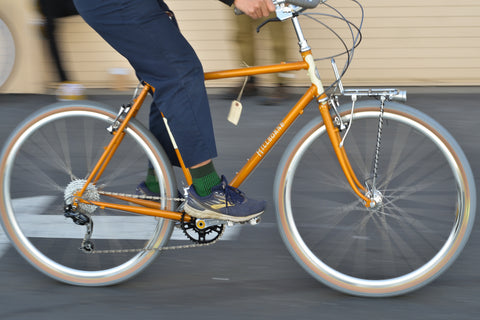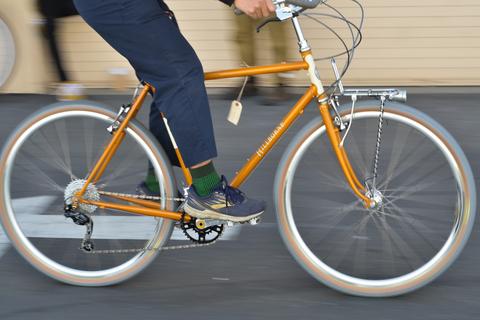
You have to specify a wheel, because wheel radius is an independent variable that affects both "trail" and "bottom bracket height." Frames don't have bottom bracket heights or trail. Bikes have both.
Five times a year somebody well meaning and semi-armed with a new vocabulary without much context or history, but a good intellect and a sincere desire to get to the meat of the matter and know facts...calls up starts off the conversation this-a-way:
"What's the wheelbase on your XYZ?"
We're thinking: If you know the other dimensions, wheelbase doesn't matter. And the other dimensions are always known. Wheelbase should never be a design criterion. It is a dependent variable, the result of other criteria (independent variables)--namely, the seat and head tube angles, top tube length and upslope, fork rake, chainstay length, and even bottom bracket drop.
A hundred bikes could have the same wheelbase, but they wouldn't fit or ride the same, or accommodate the same tires, if the independent variables are different.
Frettin' 'bout wheelbase is a vestige of the early '70s, when the country had a major infusion of rookie riders (I was one of 'em) who wanted things boiled down the the simplest understandable form, even if things got lost in the boiling.
Then, if a bike had a 39-inch wheelbase, it was a Racing bike. At 40, it was a Sport-Touring bike. At 42, a Touring bike....and now we move on.
There's a smattering of logic in the wheelbase story. Racing bikes have smaller tires than touring bikes, so the chainstays CAN be shorter, and so they usually are. (I cannot help but mention that Pino Moronni, Italian designer and consultant to the stars on record attempts) thought all chainstays should be about 45cm---more than 2-inches longer than normal race bike chainstays. Whether one thinks Pino was a nut or a genius doesn't matter, but to whatever extent
So back to the wheelbase and how it's nearly meaningless as a solo number. The important numbers are:
- Chainstay length....too short, bike is too jumpy.
- Tire and fender clearance....too little, can't run a big fun tire or fenders
- Seat tube angle....too steep, can't put seat back far enough
- Head tube angle and fork rake: Combine to influence how the bike responds.
- Fork blade length: Affects front wheel clearance
- BB drop: Affects ground clearance, standover height, and bike "feel"
I may be missing one or two, but Wheelbase isn't one of them.
When the independent variables are "right"--whatever your own personal "right" is---then the wheelbase will be right, because it can't be any other way. By definition it must be right, as long as you agree that it's a dependent variable, and not an indepedent one masquerading as a dependent one.
Summary: A good bike designer won't design to wheelbase. Wheelbase is the result of other dimensions. There are tons of ways to achieve the same wheelbase with different tube lenths and angles and offsets, and all those bikes, with the same wheelbase, will fit and ride differently.
----------
We also sometime get questions about "trail."
Here's my stance on it, and by default, Rivendell's: Trail is a stabilizing factor in steering. Not enough of it, and the bike lacks what I feel is a good amount of "self-righting," which is the bike's tendency to correct itself and get back on course after it's been jostled. That's a desirable feature in a bike, and it comes with trail.
But I'm not Buddha, and other smart-thinking people (notably, Jan Heine) like bikes with less trail. And Jan Knows Bikes. We just happen to disagree on this, but have agreed to not feud about it or let it affect a long-running friendship.
High trail, low trail....take a stance, or ride them all.
Most of our bikes have trail numbers in the high 50s to low 60s. Combined with a high handlebar---which I think affects steering a lot, but I'm not going into that here---the result are bikes that, for better or worse, but I hope better, ride just the way I want 'em too. It is a rare rider who gets one of our bikes and isn't
Whenever we get a question about trail we know the number the asker is looking for: Mid thirties. Most of the bikes made have trail figgers in the high-fifties to high sixties (for mtn bikes, which need more "self-righting"). Ours, as I've said, are in the high 50s to low 60s depending on the model (and the TIRE!!!!!), and this number is the result of years of experience, certain preferences, and how a higher bar position affects steering. It is not a willy nilly spec.

